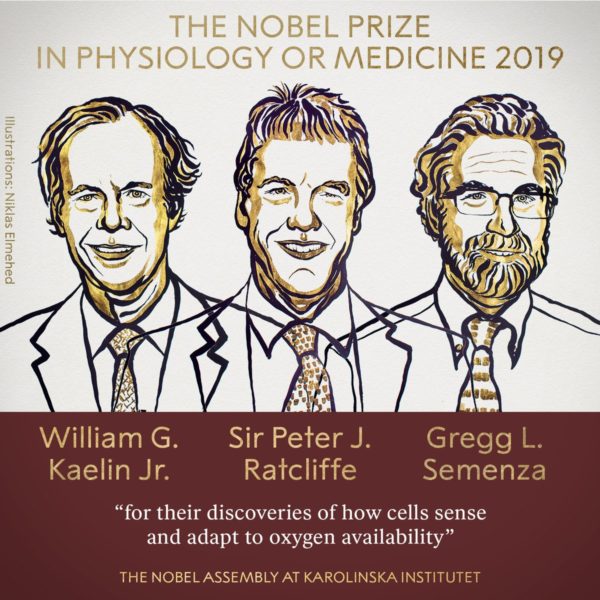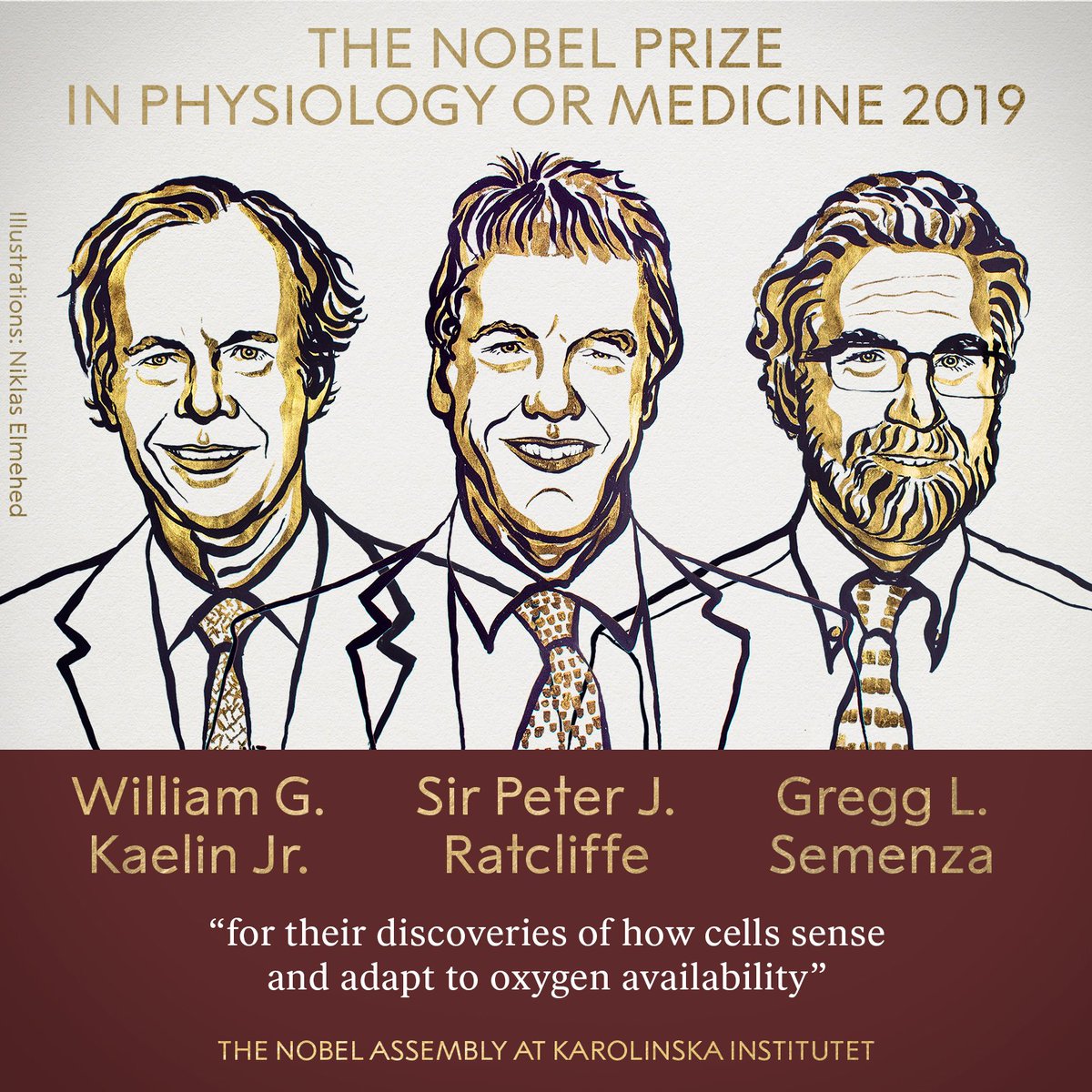Sir Peter J. Ratcliffe, of the University of Oxford and Francis Crick Institute, William G. Kaelin, of Harvard, and Gregg L. Semenza, of Johns Hopkins University share this year’s Nobel Prize for physiology or medicine.
The three scientists discovered how cells sense and adapt to oxygen levels.
Their work is leading to new treatments for anemia and even cancer.
The role of oxygen-sensing is also being investigated in diseases from heart failure to chronic lung disease.

The Swedish Academy, which awards the prize, said: “The fundamental importance of oxygen has been understood for centuries but how cells adapt to changes in levels of oxygen has long been unknown.”
Peter Ratcliffe said: “I’m honored and delighted at the news.
“It’s a tribute to the lab, to those who helped me set it up and worked with me on the project over the years, to many others in the field, and not least to my family for their forbearance of all the up and downs.”
2015 Nobel Prize in Physiology or Medicine Awarded for Groundbreaking Work on Parasitic Diseases
The oxygen-sensing ability of the body has a role in the immune system and the earliest stages of development inside the womb.
If oxygen levels are low, it can trigger the production of red blood cells or the construction of blood vessels to remedy this.
More red blood cells mean the body is able to carry more oxygen and is why athletes train at altitude.
Oxygen levels vary in the body, particularly:
- during exercise
- at high altitude
- after a wound disrupts the blood supply
And when they drop, cells rapidly have to adapt their metabolism.
So, drugs that mimic it may be an effective treatment for anemia.
Tumors, meanwhile, can hijack this process to selfishly create new blood vessels and grow.
So, drugs that reverse it may help halt cancer.
Levels of hormone erythropoietin (EPO) were shown to rise as those of oxygen fell.
The scientists discovered this was because a cluster of proteins called hypoxia-inducible factor (HIF) was changing the behavior of DNA, the genetic code.
Further work showed when oxygen levels were normal, cells constantly produced HIF only for it to be destroyed by another protein, VHL.
However, when oxygen levels fell, VHL could no longer stick to HIF, leading to the build-up sufficient levels to change the behavior of DNA.
